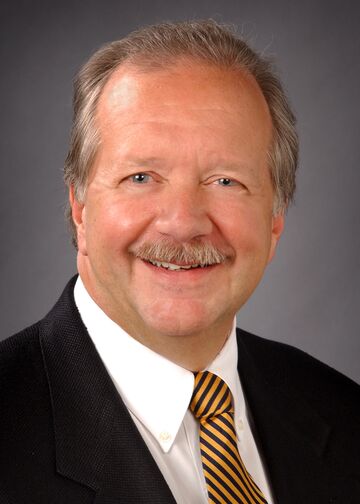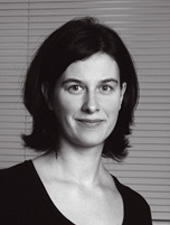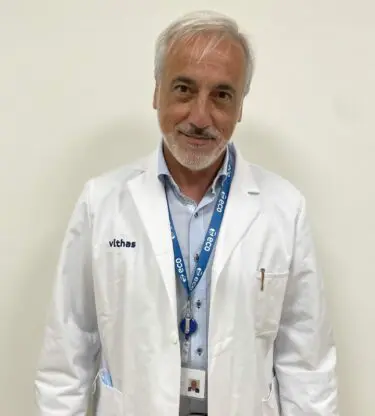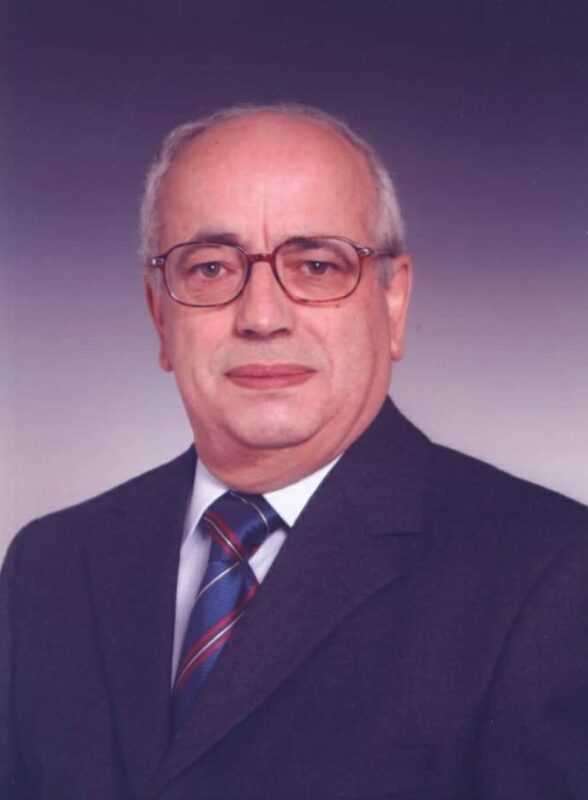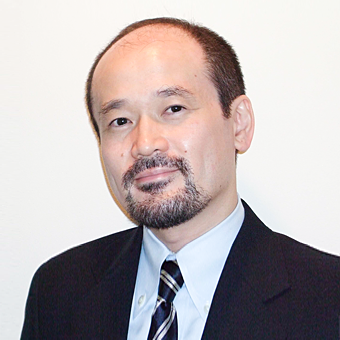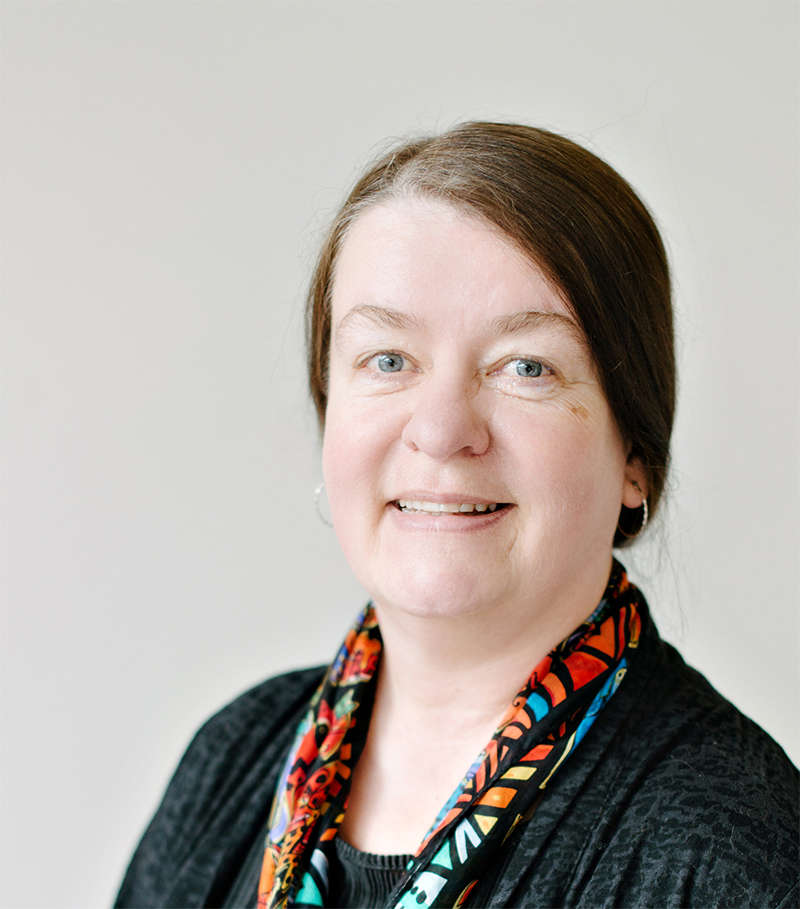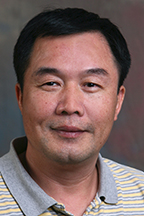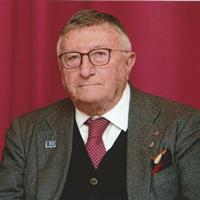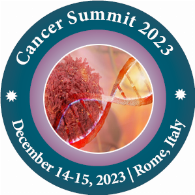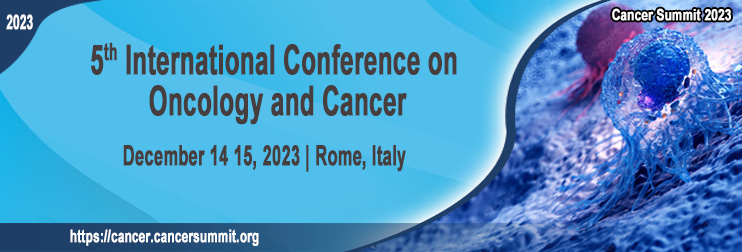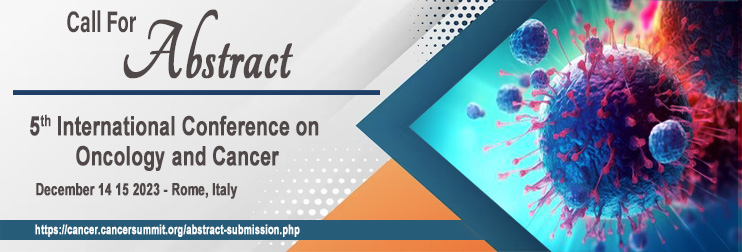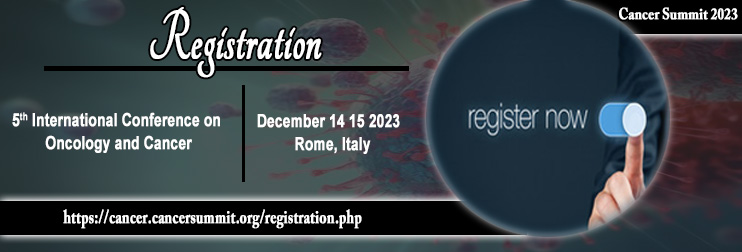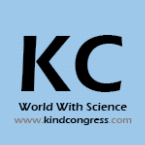Cell division could be a traditional method utilized by the body for growth and repair. Healthy cells stop dividing once there's not a requirement for additional female offspring cells; however cancer cells still turn out copies. Cancer cells square measure cells that divide unrelentingly, forming solid tumours or flooding the blood with abnormal cells. Cancer biology deals with these changes and also the molecular networks that management cell proliferation, differentiation and death. The study of varied styles of cancer is termed as medical specialty.
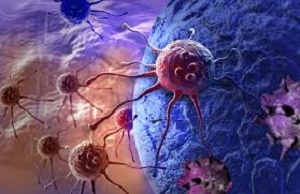
Track 1-1Cancer metabolomics
Track 1-2Regenerative cell biology
Track 1-3Host-pathogen interactions
Track 1-4Sarcoma
Track 1-5Renal Cell Carcinoma
Track-2: Clinical Oncology and Medical Case Reports
Clinical oncologists are doctors who treat patients with a balance of radiotherapy and chemotherapy. They are involved in the management of all types of cancer and use a range of other treatments to treat cancers, without using surgery.
They are different than medical oncologists, who use non-radiological treatments for cancer. Clinical oncologists determine which treatment to use by considering a range of factors such as the type of tumour, tumour site, the stage of the disease and the patient’s general health. They assess the relative merits of different treatments before presenting these to the patient.
A case study is a research method involving an up-close, in-depth, and detailed examination of a concerned case (subject/topic), as well as its related contextual conditions. Case studies can be produced by a formal research method followed by an individual, organization, event, or action, existing in a specific time and place. Here we are inviting case studies based on any types of cancer or related incidents or events with facts and figures. Presenting your studies on any other type of cancer in this category will privilege you with a 30% discount on registration.
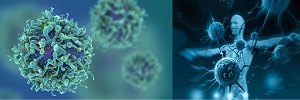
Track 2-1Cancer Physiology
Track 2-2Identifying Risk Factors
Track 2-3Cancer Biologic Factors
Track-3: Oncologic Emergencies in variety of subspecialties
The 3 major specialties of oncology are:
There are several sub-specialties in the field of Oncology. The above mentioned specialties deal with the treatment of cancer through Chemotherapy or Immunotherapy, Biopsies and Radiology respectively.
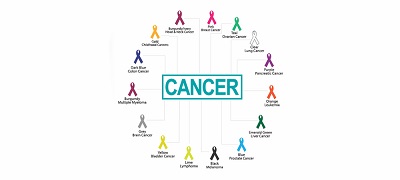
Track 3-1Neuro-oncology
Track 3-2Ocular oncology
Track 3-3Head & Neck oncology
Track 3-4Thoracic oncology
Track 3-5Breast oncology
Track 3-6Gastrointestinal oncology
Track 3-7Bone & Musculoskeletal oncology
Track 3-8Dermatological oncology
Track 3-9Genitourinary oncology
Track 3-10Adolescent and young adult (AYA) oncology
Track 3-11Hemato oncology
Track 3-12Molecular oncology
Track 3-13Oncopathology
Track 3-14Nuclear medicine oncology
Track 3-15Veterinary oncology
Track 3-16Cardio Oncology
Track 3-17Computational Oncology
Track 3-18Exercises Oncology
Track-4: Nucleic acids damage, Mutation and Cancer
DNA is the repository of genetic information in each living cell, its integrity and stability is essential to life. DNA, however, is not inert; rather, it is a chemical entity subject to assault from the environment, and any resulting damage, if not repaired, will lead to mutation and possibly disease.
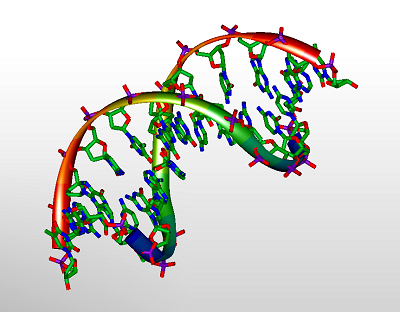
Track 4-1DNA damage and repair
Track 4-2RNA
Track 4-3Cancer genetics
Track 4-4Induced Mutagenesis in Cancer
Track 4-5Nuclear and Chromatin Dynamics
Track 4-6SNP- Cancer
Track 4-7Circulating Tumour DNA Analysis
Track-5: Cell signalling and regulation- Neurology
In biology, cell signaling is part of any communication process that governs basic activities of cells and coordinates multiple-cell actions. The ability of cells to perceive and correctly respond to their microenvironment is the basis of development, tissue repair, and immunity, as well as normal tissue homeostasis. Errors in signaling interactions and cellular information processing may cause diseases such as cancer, autoimmunity, and diabetes. By understanding cell signaling, clinicians may treat diseases more effectively and, theoretically, researchers may develop artificial tissues.
All cells receive and respond to signals from their surroundings. This is accomplished by a variety of signal molecules that are secreted or expressed on the surface of one cell and bind to a receptor expressed by the other cells, thereby integrating and coordinating the function of the many individual cells that make up organisms. Each cell is programmed to respond to specific extracellular signal molecules. Extracellular signaling usually entails the following steps:
-
Synthesis and release of the signaling molecule by the signaling cell.
-
Transport of the signal to the target cell.
-
Binding of the signal by a specific receptor leading to its activation.
-
Initiation of signal-transduction pathways.
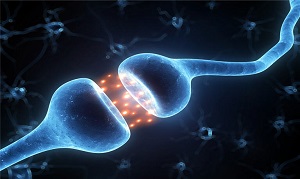
Track 5-1Genome integrity
Track 5-2Neurotransmitters
Track 5-3Signal transduction in cancer
Track 5-4Protein dynamics
Track 5-5Cancer: Redox signalling
Track-6: Cancer Immunology and Immunotherapy
Cancer immunology is a stream of immunology that studies communications between the immune system and cancer cells (also called tumors or malignancies). It is a field of research that intent to discover cancer immunotherapies to treat and decelerate evolution of the disease. The human immune system mounts natural endogenous response to foreign cells. The gamut of genetics and epigenetics changes occurring in tumors provides diverse set of antigenic repertoire that host’s immune system can exploit to distinguish tumour versus their normal healthy counterparts.

Track 6-1Cancer Antigens & Vaccines
Track 6-2Host-Tumor Relation
Track 6-3Clinical Cancer immunology
Track 6-4Cellular Immunotherapy
Track 6-5Antibody Therapy
Track-7: Oncolytic Virus And Cancer
An oncolytic virus is a virus that preferentially infects and kills cancer cells. As the infected cancer cells are destroyed by oncolysis, they release new infectious virus particles or virions to help destroy the remaining tumour. Oncolytic viruses are thought not only to cause direct destruction of the tumour cells, but also to stimulate host anti-tumour immune system responses. The potential of viruses as anti-cancer agents was first realised in the early twentieth century, although coordinated research efforts did not begin until the 1960s. A number of viruses including adenovirus, reovirus, measles, herpes simplex, Newcastle disease virus, and vaccinia have been clinically tested as oncolytic agents. Most current oncolytic viruses are engineered for tumour selectivity, although there are naturally occurring examples such as reovirus and the senecavirus, resulting in clinical trials.
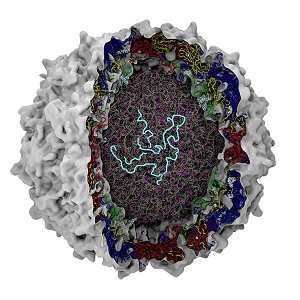
Track 7-1Oncolytic behaviour of wild-type viruses
Track 7-2Bio-engineered oncolytic virus for the treatment of cancer
Track 7-3Recently approved therapeutic agents
Track-8: Bioscience- Oncology
Cancer is a genetic disease caused by accumulation of DNA mutations and epigenetic alterations leading to unrestrained cell proliferation and neoplasm formation. The goal of oncogenomics is to identify new oncogenes or tumor suppressor genes that may provide new insights into cancer diagnosis, predicting clinical outcome of cancers and new targets for cancer therapies. The success of targeted cancer therapies such as Gleevec, Herceptin and Avastin raised the hope for oncogenomics to elucidate new targets for cancer treatment. Nanotechnology as defined by size is naturally very broad, including fields of science as diverse as surface science, organic chemistry, molecular biology, semiconductor physics, energy storage, microfabrication, molecular engineering, etc. The associated research and applications are equally diverse, ranging from extensions of conventional device physics to completely new approaches based upon molecular self-assembly, from developing new materials with dimensions on the nanoscale to direct control of matter on the atomic scale.

Track 8-1Cancer Bioinformatics
Track 8-2Cancer Nanotechnology
Track 8-3Cancer Biomarkers
Track 8-4Cancer & Stem cell technologies
Track 8-5Cancer Bio semiotics
Track-9: Paediatric Oncology
Pediatric Oncology is the term used to comprise all malignant conditions among neonates & children with cancer. The most common childhood cancers are, Neuroblastoma, Retinoblastoma, Wilms tumor and brain tumors, such as gliomas. Childhood cancers are very rare and may differ from adult cancers in the way they grow, spread, treated, and respond to treatment.

Track 9-1Clinical Paediatrics
Track 9-2Genetics in Paediatric Oncology
Track 9-3Paediatric Nutrition
Track 9-4Paediatric Radiology
Track 9-5Pediatric Oncology Nursing
Track 9-6Integrative Pediatric Oncology
Track 9-7Palliative Care in Pediatric Oncology
Track-10: Pharmaceutical oncology and Pharmacokinetic studies
A multidisciplinary way to deal with redesign has been connected in a variety of settings in clinical oncology, especially among patients with stomach and colorectal malignancy. Cancer has one of the highest mortality rates of all diseases worldwide. As a pre-treatment prior to hematopoietic progenitor cell transplantation carried out as a part of treatment for all forms of blood cancer, this drug is contributing to patients as a necessary drug that ranks alongside radiation therapy. Hepatitis B antibody was disease counteractive action antibodies upheld Drug Administration (FDA). Disease treatment immunizations were likewise considered restorative antibodies.

Track 10-1Theoretical Medicines
Track 10-2Anti-Metabolite Drugs
Track 10-3Drug interactions
Track 10-4Alkylating Agents
Track 10-5Microtubule Inhibitor
Track 10-6Steroid Hormones
Track-11: Gynaecology, Infectious and oncology
Contaminations in the female genitalia and the extra sex organs are regularly known as Gynecologic InfectiousDiseases. A portion of the irresistible infections is Vulvovaginitis, Cervicitis, Pelvic Inflammatory Diseases, and Sexually Transmitted Diseases. Gynecologic Oncology is a specific field that arrangements with growths relating to the female genitalia and conceptive framework.
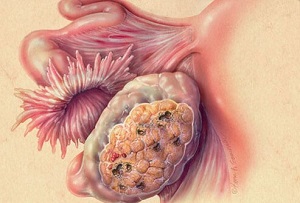
Track 11-1Oncology Rehabilitation for Cancer
Track 11-2Gynaecologic and Obstetrics Pathology
Track 11-3Polycystic ovary syndrome
Track 11-4Vulvovaginitis
Track 11-5Cervicitis
Track 11-6Pelvic Inflammatory Diseases
Track 11-7Sexually Transmitted Diseases
Track-12: Key role of pathophysiology in cancer
Pathologists are among the most important members of a patient’s cancer care team. They work to diagnose and determine the stage of cancer, setting the course for what comes next in the treatment journey.Pathology is the service that handles the blood samples and the cells and tissues removed from suspicious ‘lumps and bumps’. Cancer pathology’s key role in diagnosing and treating a complex disease, it’s important to stay up to date on new technologies and breakthroughs that continue to shape the ever-evolving landscape of cancer care.

Track 12-1Cancer Epigenetics
Track 12-2Oncogenomics
Track 12-3Metastasis
Track 12-4Anatomical Pathology
Track 12-5Pathology in cancer diagnostics
Track 12-6Cancer Cytopathology
Track-13: Oncology nursing and care
Oncology Nursing is a field including practice incorporates the jobs of direct guardian, instructor, specialist, head, and scientist. Oncology nursing care can defined as meeting the various needs of oncology patients during the time of their disease including appropriate screenings and other preventative practices, symptom management, care to retain as much normal functioning as possible, and supportive measures upon end of life. Cancer Summit 2019 will make another transformation in malignancy science and disease nursing field.

Track 13-1Nutritional care
Track 13-2Supportive Care
Track 13-3Management & Palliative Care
Track 13-4Assessing Physical & Emotional Status
Track 13-5Treatment Plans
Track 13-6Symptom Management
Track 13-7Direct Patient Care
Track-14: Radiology And Imaging current Technologies
Radiology is the medical discipline that uses medical imaging to diagnose and treat diseases within the bodies of both humans and animals. A variety of imaging techniques such as X-ray radiography, ultrasound, computed tomography (CT), nuclear medicine including positron emission tomography (PET), and magnetic resonance imaging (MRI) are used to diagnose or treat diseases. Interventional radiology is the performance of usually minimally invasive medical procedures with the guidance of imaging technologies such as those mentioned above.
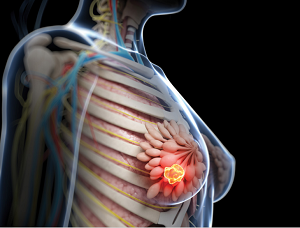
Track 14-1Cancer Biopsy
Track 14-2Cancer Histopathology
Track 14-3Cancer Differentiation
Track 14-4Computational Oncology
Track-15: Oncology Chemotherapy Advances Research studies
Cancer cells keep growing without control. Chemotherapy is drug therapy for cancer. It works by killing the cancer cells, stopping them from spreading, or slowing their growth. However, it can also harm healthy cells, which causes side effects. Cancer can be treated by surgery, chemotherapy, radiation therapy, hormonal therapy, targeted therapy and synthetic lethality.
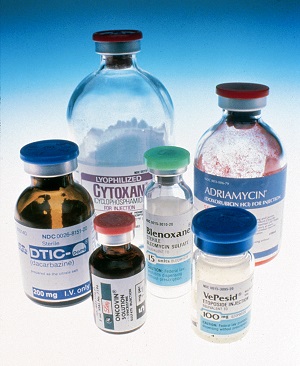
Track 15-1Cancer Radiation Therapy
Track 15-2Cancer Targeted therapy
Track 15-3Cell-based therapy
Track 15-4Hormonal therapy
Track 15-5Cancer Curative treatment
Track 15-6Cancer Palliative treatment
Track 15-7Limitations of Chemotherapy
Track 15-8Cancer Therapeutics, Novel and experimental approaches
Track 15-9Adverse effects of chemotherapy
Track-16: Cancer: Complementary & alternative treatments
Complementary and alternative are terms used to describe many kinds of products, practices, and systems that are not part of mainstream medicine. You may hear them used to refer to methods to help relieve symptoms and improve quality of life during cancer treatment. We call these “complementary” because they are used along with your medical treatment.

Track 16-1Aromatherapy
Track 16-2Ayurveda
Track 16-3Art & Music Therapy
Track 16-4Homeopathic Medicines
Track 16-5Anti-Cancer Agents in Medicinal Chemistry
Track-17: Cancer: Life style Connection, nutrition & Patient Support
Many factors impact the development of cancer. Over the last 25 years, science has displayed that diet,body weight and physical activity —especially being overweight or obese—are leading risk factors for obtaining certain types of cancer. The main behavioral and environmental risk factors for cancer death in the world are related to diet and physical inactivity, use of addictive substances, sexual and reproductive health and exposure to air pollution and use of contaminated needles.
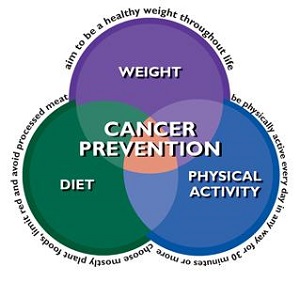
Track 17-1Investigation into Cancer and Nutrition (EPIC)
Track 17-2Lifestyle Factors
Track 17-3Population Attributable Risks
Track-18: Advances In Cancer Research And Treatment
Instruments are designed to aid in the diagnosis, monitoring or treatment of medical conditions. Several new types of equipment are used in the treatment of cancer such as:
Linear Accelerator (LINAC) – It emits radiation of highly localised (X-rays) and it is useful in the treatment of cancer. The 6 MeV linear accelerator having the capability of surface electron allows treating cancer cells even under the subcutis layer overlying the cranium. The patient can also see his activity through the connected display unit.
Gamma Camera – It is used in the detection of cancer via gamma rays. Here tracers used are introduced into the patient’s body intravenously, thus getting the image on the gamma camera as the tracer emits gamma rays which are detected by the gamma camera.
Radiography and Ultrasound – It is a non-invasive way of getting the image of the internal organs by ultrasound. It is a useful method for cancer patients for examining the abdomen for any enlargement of the lymph or masses.
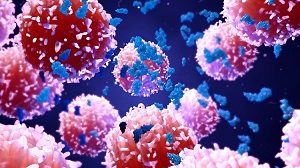
Track 18-1Targeting the DNA Damage Response to Generate New Cancer Therapies
Track 18-2Preclinical & Clinical Research
Track 18-3Early Detection Research
Track 18-4Immunoprevention
Track-19: Overall Future Outcomes and Change in Oncology Practice
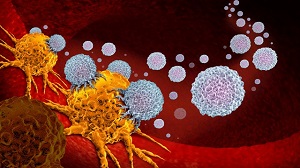
Leukemia, Lymphoma, Germ cell tumors and early stage solid tumors which were once incurable have become curable malignancies now. Immunotherapies have already proven efficient in leukemia, bladder cancer and various skin cancer. For the future, research is promising in the field of physical oncology. Survival of cancer has significantly improved over the past years due to improved screening, diagnostic methods and treatment options with targeted therapy. Large multi-centric Phase III randomised controlled clinical trials by the National Surgical Adjuvant Breast & Bowel Project (NSABP), Medical Research Council (MRC), the European Organisation for Research and Treatment of Cancer (EORTC) and National Cancer Institute (NCI) have contributed significantly to the improvement in survival.
